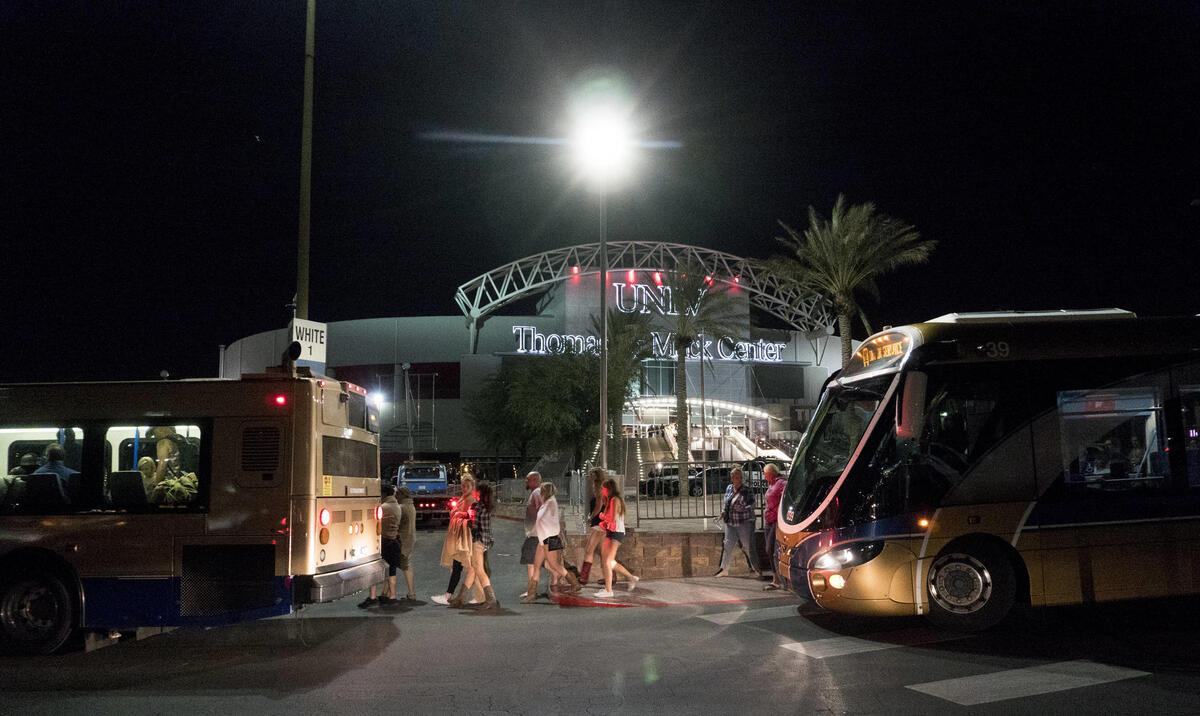In the aftermath of the Oct. 1, 2017 shooting that claimed the lives of 58 people, a number of psychology and counseling scholars at UNLV sprang into action to offer trauma counseling to victims and witnesses of the deadliest mass shooting in recent U.S. history. The UNLV scholars helped provide aid and comfort to hundreds of evacuees, mostly noninjured, who were driven by bus from the strip to the UNLV Thomas & Mack Center soon after the shooting. The Conversation recently connected with those scholars to hear what they learned from the experience.
What is “psychological first aid”? How do mental health experts like you work side by side with traditional first responders?
The goal of psychological first aid is to sooth, assist and help people function and cope in a healthy way in the wake of a traumatic event.
It’s employed in the hours and days following the event, when people’s immediate needs, including medical care, as well as basic needs like food, shelter, and water, must be met, along with their psychological and physical safety needs.
The point is not to push people to express emotion or describe in detail what they experienced. Rather, mental health professionals can help first responders by offering survivors practical assistance, comfort, safety, good compassionate company, and emotional support.
For example, in the hours following the Oct. 1 mass shooting in Las Vegas, nonwounded victims and evacuees from the Strip needed basic things: blankets to cut the chill of the evening hours and psychological shock, cell phone chargers so they could stay in touch with loved ones, rides home and reliable news updates to reduce chaos and control rumors. By helping provide these simple needs, our team of mental health professionals was able to free up first responders and law enforcement to do their jobs.
What tools and treatments can mental health clinicians offer in the wake of this kind of almost unimaginable tragedy?
In the immediate aftermath of the shooting, people needed to know how this stressful event would affect them. For example, potential effects may have included trouble sleeping, increased nervousness or feeling easily upset or agitated.
People also needed guidance to pursue healthy coping strategies. They needed to know where to find support services then and in the future, as well as information regarding the signs that someone might need a higher level of professional care. Such signs include persistent anxiety.
Unfortunately, we heard from victims who were initially given ill-informed treatment by poorly trained providers. Some were “debriefed” in a group setting for hours, encouraged to share their stories and describe the trauma in detail. As psychology and counseling researchers, we know this outdated treatment approach is harmful and can retraumatize people who are already vulnerable and hypersensitive.
In the days, weeks and months after an event like this shooting, people are often hyperaroused – that is, in a ramped-up jittery state – and hypervigilant – that is, overly aware and reactive to everything in their environment. They’re expecting danger and feeling unsafe, fearful, angry or distressed. Others may keep thinking about the traumatic event. Memories of the event can intrude on their day. They may have difficulty sleeping because the memories keep running through their mind. Or they may have nightmares. Others may experience emotional numbing or avoidance.
We helped victims build resilience skills such as problem-solving and engaging in positive activities, like spending quality time with loved ones and participating in activities that they enjoy. We educated people on how to manage emotional and physical reactions through things such as breathing exercises or identifying and planning for triggers. Mental health professionals also promote helpful thinking and identify opportunities for establishing a sense of community and belonging. Perhaps more importantly, professionals trained in psychological first aid are prepared to identify and assist those who won’t recover on their own.
When the skills-building approach isn’t enough, mental health professionals know how to identify those who will need a higher level of care.
What did you learn in the heat of disaster response that’s applicable now a year later and on into the future in terms of mental health?
Different people need different things. Some of the people we worked with following the Oct. 1 shooting needed to talk. Some needed to sit quietly. Some needed to get busy and find something to do to feel helpful. Some needed to take a day to themselves. There are typical human stress responses to an abnormal event, but there is no one prescribed journey toward healing.
We also know that people are naturally wired to need a sense of belonging and human connection. And, in this sense, personal and community healing go hand in hand. One cannot exist without the other.
This article is republished from The Conversation under a Creative Commons license. Read the original article.



